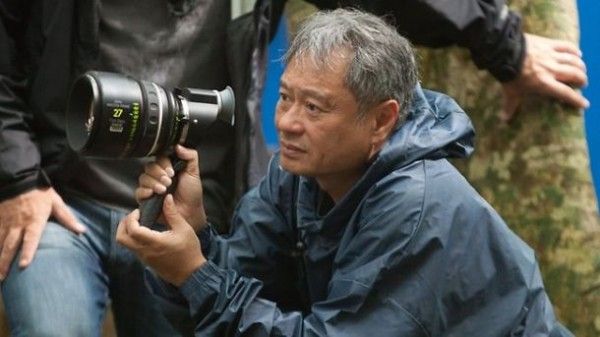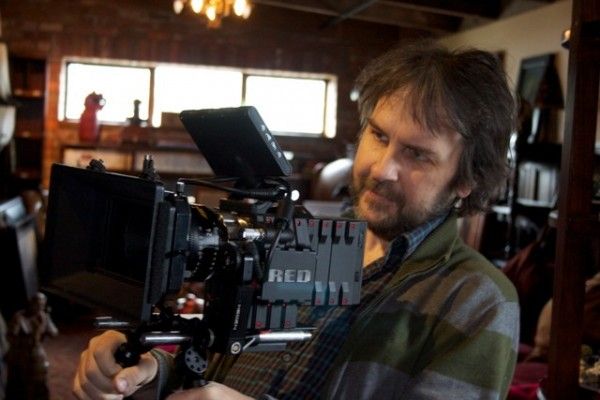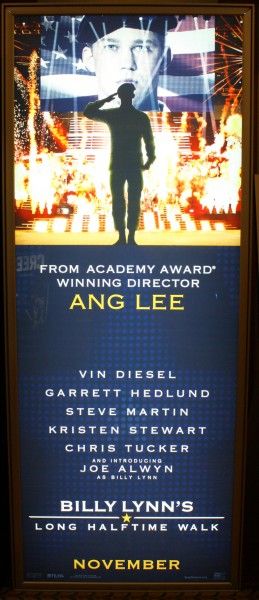A few years ago, Peter Jackson was poised to change the world of cinema forever with the ambitious decision to shoot The Hobbit films at 48 frames per second. For decades, films have been captured at 24 frames per second, so this higher frame rate aimed to alter the language of film, further immersing audiences into the world. The experiment, however, was a failure. Many felt that The Hobbit: An Unexpected Journey at 60 frames per second looked like video. Furthermore, the clarity of picture and motion had the opposite effect of further immersing audiences into the world, as it was abundantly clear that we were looking at an elaborate movie set for a fantasy film. After An Unexpected Journey’s release, the following two Hobbit films were given much more limited HFR releases, and Jackson said nary a word about the format during the next two press rounds.
But perhaps the fantasy genre was simply the wrong palette for HFR photography. That’s what Oscar-winning Life of Pi director Ang Lee is hoping anyway, as he doubled down on Jackson's gamble and went and shot his Iraq War PTSD drama Billy Lynn’s Long Halftime Walk at an astounding 120 frames per second, in 4K and native 3D. Based on the book of the same name by Ben Fountain, the film stars Garrett Hedlund, Kristen Stewart, and Steve Martin and follows a group of soldiers as they’re honored during halftime at a Dallas Cowboys football game, intercutting the footage with flashbacks to their time at war.
The first completed footage from the film was just given a showcase at the Future of Cinema Conference, and judging by the reaction from tech insiders, Billy Lynn could be a game-changing film for the industry.
A presentation of an 11-minute sequence was shown to the audience, which intercut battle footage with the soldiers on the field at the Cowboys football game. Variety’s David S. Cohen was onhand and his immediate reaction was as follows:
In a full writeup on the event over at Variety, Cohen spoke with a former Sony exec named Andrew Stucker who addressed the “does it look like video?’ question head on:
“I was extraordinarily impressed. I didn’t see a movie-like image, but I saw something entirely different. It was as immersive and involving an image play as I’ve ever seen.” Asked if it looked like video, he said “Not really. When you first look at it, you think, ‘Oh, that’s video.’ But it’s an extension beyond video. Whatever that is, I’m not entirely sure, but it’s more than video.”
Many seemed to agree that at first, the footage had a video-like feeling, but that soon dissipated. This will be the primary point of contention for average moviegoers, as it was the soap opera quality of The Hobbit that turned everyone off. If it looks like you’re watching performers on a stage through the screen, the illusion of moviemaking is broken. But if you can capture something that goes beyond, that enhances the reality of the image without forsaking the immersive quality of film, that could be something altogether spectacular.
Has Lee pulled it off? We’ll have to wait until later this year to find out ourselves, but unfortunately as Cohen points out, most moviegoers won’t be able to see Billy Lynn’s Long Halftime Walk in its pure intended format:
It was a shown on dual-projector setup specially assembled for the show, using high-end Christie projectors and Dolby 3D. Without dual projectors, no commercial movie theaters will be able to show 3D/4K/120. Even with dual projectors, the best format likely to be available is 3D/4K/60.
Will the “downgrading” of 120 fps to 60 fps make a marked difference? That remains to be seen, but given the pedigree involved this film was already high on many most anticipated lists. It’ll be mighty curious to see just how this new format is received later this year, but whatever the case, my interest has been piqued even further by these reactions.
Billy Lynn’s Long Halftime Walk opens in theaters on November 11th.




